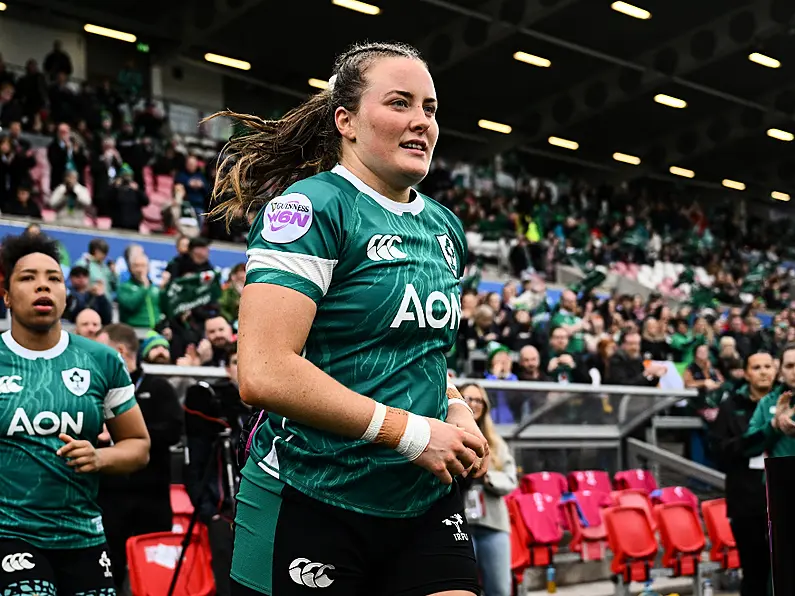In the United States, a federal law was created that helped protect women in the male-dominated world of sports. Title IX is part of the Education Amendment Acts enacted by congress and signed into law by President Richard Nixon. The law makes it illegal to discriminate someone on the base of sex from any federally funded activity. This would include school athletic programs starting in elementary all the way to the collegiate level.
Title IX states that, “No person in the United States shall, on the basis of sex, be excluded from participation in, be denied the benefits of, or be subjected to discrimination under any education program or activity receiving Federal financial assistance.”
Before 1972: Women have fought long and hard to participate in sports. In the 1870’s, sports for women mainly consisted of recreational activities rather than competition based exercises . Dr. Edward Clark published Sex in Education, a book that sparked debate over a women’s cabilities for phycial activities. It was rumored that high levels of physical activity could hurt child labor, which was of the highest importance at that time. In the late 1800’s and early 1900’s, women became more interested in physical activity and therefore began to grow competitive in sports. Athletic clubs were formed to allow them to compete.
Women were not active at collegiate level until basketball was introduced at Smith College in 1892. The first women’s suffrage movement in 1920, which resulted in the passage of the 19th amendment giving women the right to vote, pushed their involvement in intercollegiate sports in the right direction. But, the depression of the 1930’s tore down any success in changing that status.
Nearly 40 years passed before the women’s sports movement began to push forward again. In 1966, The Division of Girls and Women’s Sports appointed a Commission on Intercollegiate Sports for Women. A schedule of national championships was created in 1969 which included gymnastics and track and field events followed by swimming, badminton, and volleyball in 1970.
June 23, 1972: Title IX was signed into law to correct imbalances of men and women in school activities. Before, The National Collegiate Athletic Association (NCAA), who was the ruling body of all collegiate sports, offered no scholarships or championship tournaments to women’s teams.
Throughout the years, it has grown into one of the most important laws in protecting women’s sports.
1973: When Title IX was first created, it did not specifically state “sports” or “athletics” in the law. It was originally designed to promote equality in academic institutions. In 1973, congress officially formalized the inclusion of athletics.
1974: Colleges started to give scholarships to women. Ann Meyers Drysdale was the first female athlete to receive a four-year scholarship to play Division I basketball at UCLA.

Title IX did not require equal funding, but equal access to teams and quality. Both men’s and women’s programs were required to provide the same resources such as locker rooms, training centers, coaching, and medical treatment. Scholarships were awarded based on percentages, in which the percentage of women receiving scholarship would match that of the men.
Feb. 17, 1976: The NCAA filed a lawsuit against the legality of Title IX. They claimed that no athletic program received direct federal funding and therefore did not have to comply with the law. The lawsuit was dismissed.
1979: A three-part test was created to guide and ensure compliance with the Title IX rules. Every athletic program had to abide by at least one of the tests and therefore it gave schools three different ways to comply.
Test 1: opportunities and participation in women’s sports must be proportionate to that of enrollment.
Test 2: Schools must show that they have expanded opportunities to the underrepresented sex as their interests and abliites have eveloved.
Test 3: The underrepresented sex must be fully accomidated. Therefore, schools must provide a team and competition in the area when there is sufficient interest and ability. This is the most chosen compliance method at the collegiate level. The school determines if there is enough interest by evaluating on-campus clubs, intramural teams, or even physical education classes.
1981-1982: The NCAA crowns the first women's Division I national champions in cross-country, field hockey, volleyball, swimming, basketball, golf, gymnastics, tennis, outdoor track, and softball.
Feb. 28, 1984: The supreme court case of Grove City College vs. Bell was the biggest Title IX setback. The supreme court ruled in Grove City College’s favor in which they argued that only programs that were directly funded by the government would have to comply with the Title IX law. Many schools began to cut their newly added women’s teams because of the decision.
March 22, 1988: Four years passed before the ruling of Grove City College vs. Bell was overturned. Congress was able to override a veto by President Regan which passed the Civil Rights Restoration Act. It stated that all schools receiving federal funding must abide by the Title IX rules.
1992: The NCAA formed the Gender-Equity Task Force after conducting the first ever gender equity study. They found that women made up 55% of the student body, yet men constituted 70% of student-athletes, received 70% of athletic scholarships, 77% of the operating budget and 83% of the recruiting money.
March 17, 2005: The Department of Education issued a new policy that allowed schools to submit email surveys to female students to determine their interests and abilities in certain sports. If the surveys did not demonstrate significant interests or ability, no additional sports programs would be required.
April 20, 2010: The Department of Education withdrew their previous policy about email surveys and opposed the method to determine female interest and ability.
Present: Title IX has increased women’s participation in sports tremendously. In 1972, only 15% of women participated in collegiate sports, now, women make up almost 45%. As time passes, it continues to change to fit the needs of society.
Although this law helps level the playing field, we are continuously shown there is still a long way to go to ensure women have complete equality in sports, as can be seen by the recent NCAA male/female gym disparity scandal back in March.
As can be witnessed by the reaction to the viral video above the tides are changing and the wave of equity and parity of women in sport is beginning to be transformed in mindset, but has yet to become a reality.
Hopefully it will not take another millennium for the next update/ adjustment to occur in the story!
Sources:












